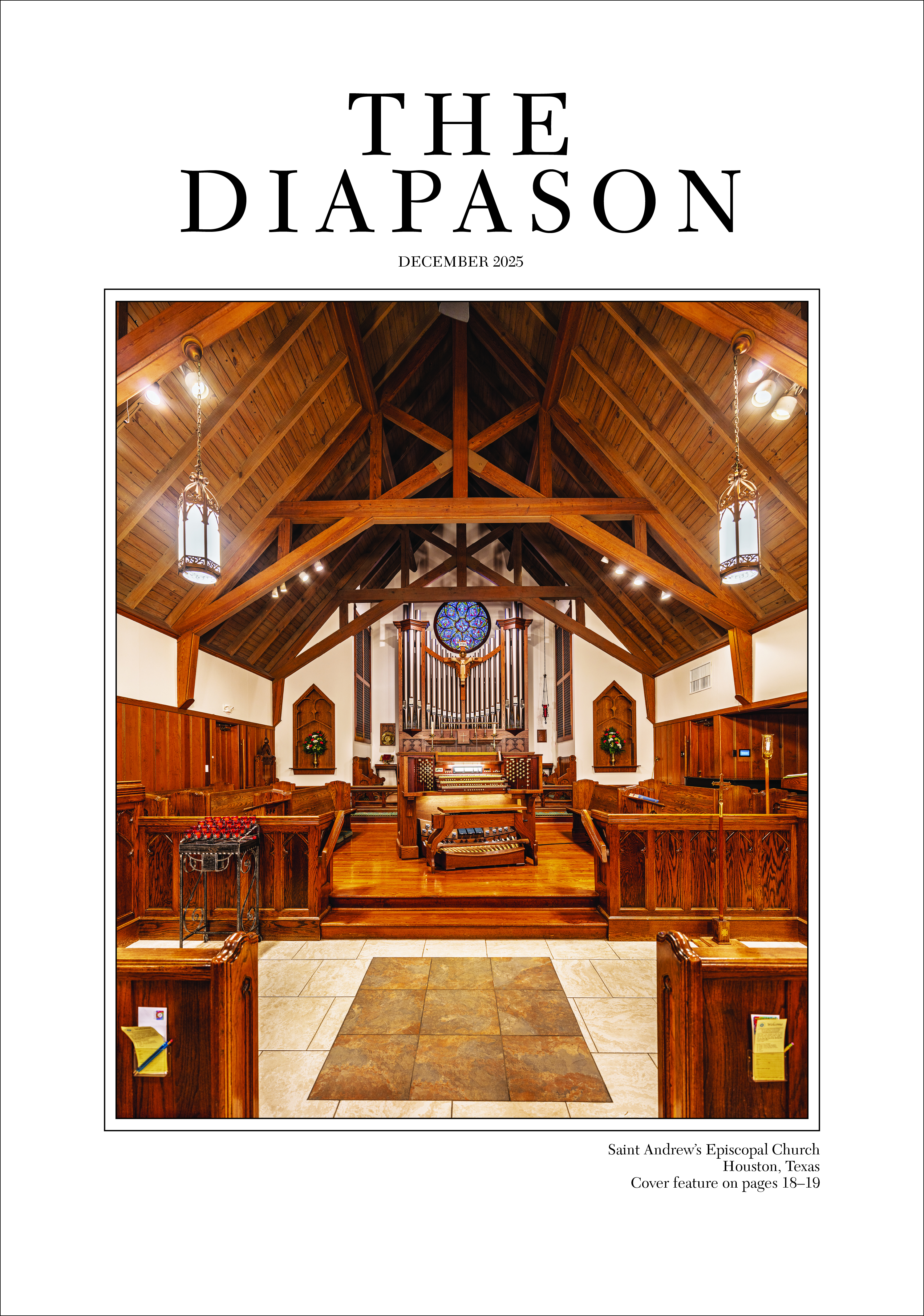
Longwood Gardens, Kennett Square, Pennsylvania, announces winners of its 2019 Longwood Gardens International Organ Competition.
Sebastian Heindl, 21, of Gera, Germany, is the winner, garnering the $40,000 Pierre S. du Pont First Prize. In addition, Heindl, a student at the University of Music in Leipzig, receives a contract with Phillip Truckenbrod Concert Artists and a 2019–2020 performance at Longwood Gardens. Heindl also earned the $1,000 Audience Choice Prize and the American Guild of Organists Philadelphia Chapter Prize of $1,000, recognizing outstanding performance of the judges’ choice piece, To Longwood Gardens, by Samuel Barber.
The Firmin Swinnen $15,000 Second Prize was awarded to Bryan Anderson, 26, interim director of music of St. Thomas Episcopal Church and School, Houston, Texas, and a member of The Diapason’s 20 Under 30 Class of 2017. Colin MacKnight, 25, of Morristown, New Jersey, was presented the Clarence Snyder $5,000 Third Prize. MacKnight is associate organist and choirmaster at the Cathedral of the Incarnation, Garden City, Long Island, and a member of The Diapason’s 20 Under 30 Class of 2019.
Judges were Peter Richard Conte, Marnie Giesbrecht, Maggie Hamilton, Thomas Heywood, Rossen Milanov, Alan Morrison, and Todd Wilson. Haig Mardirosian served as master of ceremonies.
The Longwood Gardens International Organ Competition began in 2013 and is held every three years. It is designed to recognize young talent of ages 18 to 30. Ten musicians are selected from around the world to compete on the Longwood Organ, the largest residential organ in the world with 10,010 pipes, 146 ranks. A video of the final round performances is available at www.longwoodgardens.org/organcompetition.

